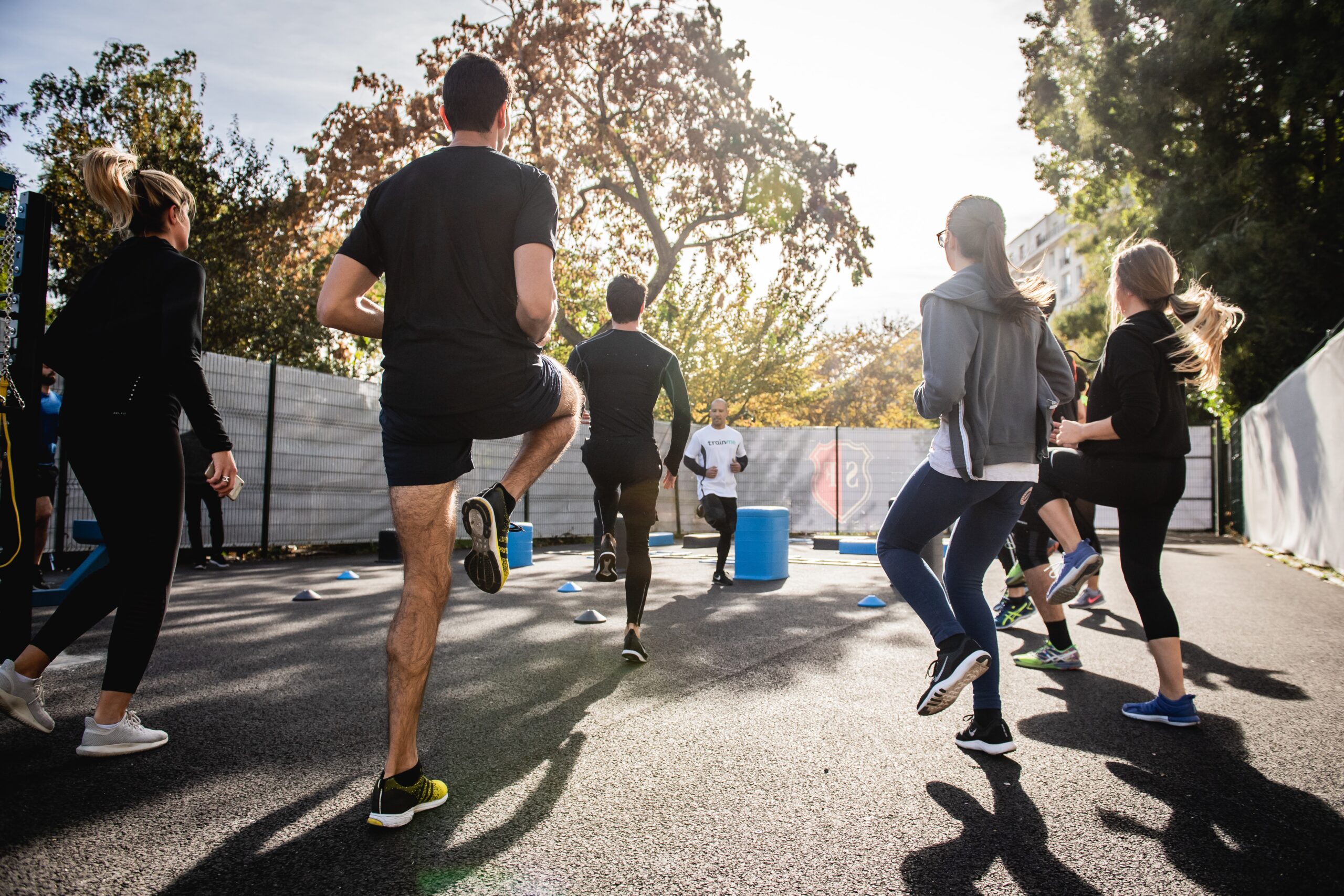Tennis is a physically demanding sport that requires agility, speed, and endurance. Whether your child is an aspiring tennis prodigy or simply enjoys playing for fun, it’s crucial to incorporate warm-up exercises into their routine. Warming up not only reduces the risk of injuries but also enhances performance on the court. In this comprehensive guide, we’ll explore the importance of warm-up exercises for young tennis players and provide a range of effective exercises to help them prepare for their matches and practice sessions.
Table of Contents
- Why Warm-Up Exercises are Essential for Young Tennis Players
- The Basics of Tennis Warm-Up
- Static vs. Dynamic Warm-Up
- A Dynamic Warm-Up Routine for Young Tennis Players a. Jumping Jacks b. High Knees c. Butt Kicks d. Lateral Leg Swings e. Arm Circles
- Static Stretching for Tennis a. Quad Stretch b. Hamstring Stretch Shoulder Stretch d. Calf Stretch
- Mental Warm-Up
- Conclusion
Why Warm-Up Exercises are Essential for Young Tennis Players
Before diving into specific warm-up exercises, let’s understand why warming up is crucial for young tennis players:
1. Injury Prevention
One of the primary reasons for warming up is to prevent injuries. Tennis involves quick changes in direction, explosive movements, and repetitive strokes. A proper warm-up prepares the body by increasing blood flow to the muscles and improving joint mobility, reducing the risk of strains and sprains.
2. Enhanced Performance
A well-executed warm-up can enhance a young player’s performance on the tennis court. It primes the cardiovascular system, increases muscle temperature, and improves neuromuscular function. As a result, your child will be more agile, responsive, and accurate in their movements.
3. Mental Preparation
Warming up is not just about the body; it’s also about preparing the mind. It allows young tennis players to focus, build confidence, and establish a pre-game routine. Mental readiness can be a game-changer in competitive matches.
The Basics of Tennis Warm-Up
A tennis warm-up typically consists of two main components: dynamic exercises and static stretching. Dynamic exercises involve active movements that mimic the motions of tennis and gradually raise the heart rate. Static stretching, on the other hand, helps to lengthen and relax muscles after the dynamic phase.
Static vs. Dynamic Warm-Up
Before we delve into specific exercises, it’s essential to understand the difference between static and dynamic warm-up:
Static Warm-Up
- Purpose: To improve flexibility and range of motion.
- When: After dynamic warm-up or as part of a post-match cool-down.
- Examples: Holding a stretch for 15-30 seconds without movement.
Dynamic Warm-Up
- Purpose: To increase blood flow, heart rate, and muscle temperature.
- When: Before the match or practice session.
- Examples: Active movements that involve continuous motion.
For young tennis players, dynamic warm-up exercises are the primary focus to prepare the body for the intensity of the sport.
A Dynamic Warm-Up Routine for Young Tennis Players
Now, let’s get into the specifics of a dynamic warm-up routine that’s ideal for young tennis players. These exercises should be performed in a controlled manner, and each movement should be executed with precision.
Jumping Jacks
Objective: Increase heart rate and warm up the lower body.
- Stand with your feet together and arms at your sides.
- Jump, spreading your legs apart and raising your arms overhead.
- Return to the starting position by jumping again and bringing your feet together while lowering your arms.
Perform 2 sets of 20 jumping jacks.
High Knees
Objective: Improve leg strength and coordination.
- Stand with your feet hip-width apart.
- Lift your right knee as high as possible while hopping on your left foot.
- Alternate legs in a running motion, bringing each knee up towards your chest.
Perform 2 sets of 20 high knees (10 per leg).
Butt Kicks
Objective: Warm up the hamstrings and calf muscles.
- Stand with your feet hip-width apart.
- Jog in place while kicking your heels up towards your glutes.
- Keep a brisk, continuous motion.
Perform 2 sets of 20 butt kicks (10 per leg).
Lateral Leg Swings
Objective: Increase hip mobility and flexibility.
- Stand beside a wall or support for balance.
- Swing your right leg sideways in front of your body and then back behind it.
- Repeat the motion, swinging your leg back and forth.
Perform 2 sets of 10 swings per leg.
Arm Circles
Objective: Warm up the shoulder joints and upper body.
- Stand with your feet shoulder-width apart.
- Extend your arms straight out to the sides.
- Begin making small circles with your arms, gradually increasing their size.
- After 10 seconds, reverse the direction of the circles.
Perform 2 sets of 20 seconds of arm circles (10 seconds forward, 10 seconds backward).
Static Stretching for Tennis
After completing the dynamic warm-up, it’s essential to incorporate static stretching to maintain flexibility and prevent muscle tightness. Here are some effective static stretches for young tennis players:
Quad Stretch
Objective: Stretch the quadriceps muscles.
- Stand on your left foot and grab your right ankle behind you with your right hand.
- Gently pull your ankle towards your glutes while keeping your knees close together.
- Hold the stretch for 15-30 seconds, then switch sides.
Perform 2 sets of 15-30 second quad stretches per leg.
Hamstring Stretch
Objective: Stretch the hamstring muscles.
- Sit on the ground with your legs extended straight in front of you.
- Reach for your toes, keeping your back straight.
- Hold the stretch for 15-30 seconds.
Perform 2 sets of 15-30 second hamstring stretches.
Shoulder Stretch
Objective: Stretch the shoulder and upper back muscles.
- Extend your right arm across your chest.
- Use your left hand to gently pull your right arm closer to your chest.
- Hold the stretch for 15-30 seconds, then switch sides.
Perform 2 sets of 15-30 second shoulder stretches per arm.
Calf Stretch
Objective: Stretch the calf muscles.
- Stand facing a wall with one foot forward and one foot back.
- Lean against the wall with your hands while keeping your back leg straight and your heel on the ground.
- Hold the stretch for 15-30 seconds, then switch sides.
Perform 2 sets of 15-30 second calf stretches per leg.
Mental Warm-Up
In addition to physical preparation, it’s essential to mentally warm up before a tennis match or practice session. Here are some strategies to help young tennis players mentally prepare:
- Visualization: Encourage your child to visualize successful strokes, rallies, and matches. This helps build confidence and mental focus.
- Breathing Exercises: Teach them deep breathing techniques to calm nerves and maintain composure during intense moments.
- Goal Setting: Set achievable goals for each practice session or match. This gives young players a sense of purpose and motivation.
Conclusion
A proper warm-up is a fundamental aspect of a young tennis player’s training regimen. It not only reduces the risk of injuries but also optimizes performance and mental readiness. By incorporating dynamic exercises, static stretching, and mental preparation, you can ensure that your child is well-prepared to excel on the tennis court. Remember that consistency is key, and making warm-up exercises a regular part of their routine will contribute to their long-term development as a tennis player.
Warm-up exercises are essential for young tennis players so a comprehensive dynamic warm-up routine, static stretching exercises, and tips for mental preparation have been included. This information is crucial for young athletes and their coaches or parents to ensure they stay safe, perform at their best, and develop good habits for their tennis careers.
It’s worth emphasizing the importance of tailoring warm-up routines to individual needs and taking into account factors such as the player’s age, fitness level, and any previous injuries or limitations. Younger players may benefit from a slightly different warm-up routine compared to more experienced or older athletes.
Additionally, always encourage young tennis players to listen to their bodies and communicate any discomfort or pain during warm-up or practice to avoid potential injuries. Regularly revisiting and adjusting the warm-up routine as players progress is also essential to ensure that it remains effective and suitable for their evolving needs.
Overall, the detailed explanation of warm-up exercises and their benefits will be a valuable resource for coaches, parents, and young tennis players looking to improve their performance and reduce the risk of injuries on the court.





